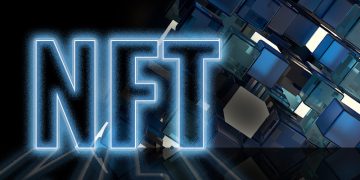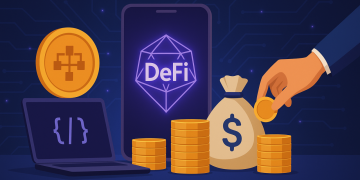Blockchain technology is widely regarded for its decentralized and secure nature. By design, it offers a robust defense against many types of cyberattacks and malicious activities that plague traditional systems. Blockchain networks, whether used for cryptocurrencies, smart contracts, or decentralized applications (dApps), rely on various mechanisms to resist hacking and protect data integrity.
However, no system is entirely invulnerable, and while blockchain presents strong defense mechanisms, it is essential to understand how it actively resists attacks and what vulnerabilities still exist. In this article, we will explore how blockchain networks are designed to defend against hacking, 51% attacks, double-spending, sybil attacks, and smart contract vulnerabilities, as well as the best practices to further enhance security.
1. Decentralization: The Backbone of Blockchain Security
How Decentralization Helps
The most fundamental security feature of a blockchain network is its decentralized architecture. Unlike traditional centralized systems, where a single entity or server stores and controls all the data, blockchain networks distribute this responsibility across multiple nodes (computers or servers) that work together to validate transactions and maintain the ledger.
Benefits of Decentralization:
- No Single Point of Failure: Because there is no central server or authority, an attacker cannot easily compromise the entire network by targeting a single node or entity. Even if some nodes are compromised, the majority of the network remains intact.
- Redundancy and Transparency: Each participant (node) has a complete copy of the blockchain, so data is redundant and transparent. If a hacker tries to alter a transaction or block, the change must be reflected across all copies of the blockchain, making it virtually impossible to tamper with data unnoticed.
2. Cryptographic Hashing: Ensuring Data Integrity
How Cryptography Protects the Blockchain
Blockchain relies heavily on cryptographic hashing to secure data. Every transaction and block is linked via cryptographic hashes, which are unique, fixed-length outputs derived from input data. The process of hashing ensures that once data is recorded on the blockchain, it cannot be altered without detection.
Each block contains:
- A hash of the previous block, linking the blocks together.
- A hash of the current block’s data, ensuring that the data has not been tampered with.
How Cryptographic Hashing Resists Attacks:
- Immutability: If someone tries to modify the data in a block, even a single character, the resulting hash will change completely, which will break the connection with the next block and make the tampering detectable.
- Proof-of-Work (PoW): In networks like Bitcoin, the proof-of-work consensus algorithm requires miners to solve complex cryptographic puzzles to add a new block to the chain. The difficulty of these puzzles increases with the size of the network, making it computationally infeasible for attackers to alter the blockchain without controlling a significant portion of the network’s mining power.
3. Consensus Mechanisms: Securing the Network from Malicious Actors
What Are Consensus Mechanisms?
Consensus mechanisms are the protocols used by blockchain networks to agree on the validity of transactions and the order of blocks. These mechanisms ensure that all participants on the network are in sync, even though no central authority exists to validate transactions.
Common Consensus Algorithms:
- Proof-of-Work (PoW): Used by Bitcoin and other early blockchains, PoW requires miners to solve complex cryptographic problems to add new blocks. This mechanism makes it extremely costly for attackers to manipulate the blockchain because altering past blocks would require enormous computational power.
- Proof-of-Stake (PoS): In PoS, validators are chosen to create new blocks based on the amount of cryptocurrency they hold and are willing to “stake” as collateral. It is cheaper and more energy-efficient than PoW, but still maintains security through economic incentives (the risk of losing staked funds for dishonest behavior).
- Delegated Proof-of-Stake (DPoS): In DPoS, a smaller number of trusted validators are elected to create blocks, ensuring quicker transaction validation. DPoS focuses on reducing attack vectors by limiting the number of active participants.
- Practical Byzantine Fault Tolerance (PBFT): This consensus mechanism allows the network to remain secure even if up to one-third of the nodes are compromised or faulty. PBFT ensures that honest nodes can still reach a consensus despite malicious behavior.
How Consensus Mechanisms Prevent Attacks:
- 51% Attacks: In a 51% attack, an attacker tries to take control of the network by gaining control over more than half of the network’s mining or staking power. Consensus algorithms like PoW and PoS are designed to make such attacks incredibly costly and difficult to execute, especially as the size of the network increases.
- Double Spending: The consensus mechanisms ensure that once a transaction is confirmed on the blockchain, it cannot be undone or spent twice. Each transaction requires validation from the network, which prevents double-spending by ensuring a single, immutable record.
4. Incentive Structures: Discouraging Malicious Behavior
How Economic Incentives Keep the Network Secure
Blockchain networks typically operate on an incentive-based model to reward participants for honest behavior. The most prominent example of this is mining rewards in PoW systems and staking rewards in PoS systems.
- Miners/Validators: In PoW, miners are rewarded with newly minted cryptocurrency (like Bitcoin) for solving cryptographic puzzles, while in PoS, validators receive staking rewards for confirming transactions.
- Punishments for Malicious Actors: In PoS and DPoS networks, malicious validators who attempt to cheat or double-spend can lose their staked cryptocurrency (also known as slashing). In PoW, miners who attempt to manipulate the system waste significant computational resources without reward.
These incentives create a strong deterrent against malicious behavior because the financial rewards for honest work outweigh the rewards from attacking the network.
5. Decentralized Applications (dApps) and Smart Contract Security
How Blockchain Networks Protect dApps
Decentralized applications (dApps) built on blockchain platforms, particularly on platforms like Ethereum, run on smart contracts—self-executing contracts with the terms of the agreement directly written into code. While blockchain networks provide a secure environment for dApps, vulnerabilities in smart contract code can still create security risks.
To prevent exploits:
- Code Audits: Smart contracts are often subject to external audits to identify vulnerabilities in their code before they are deployed on the network. Well-known firms provide smart contract audit services to ensure that the code is secure and free from bugs.
- Formal Verification: Some blockchain platforms use formal verification techniques to mathematically prove that the code behaves as expected, reducing the likelihood of vulnerabilities.
- Bug Bounty Programs: Many projects offer bug bounty programs where ethical hackers are rewarded for identifying vulnerabilities in smart contracts or dApps, which helps improve security.
6. Private and Permissioned Blockchains: Enhanced Security for Enterprises
How Enterprise Blockchains Differ
While public blockchains like Bitcoin and Ethereum offer robust security through decentralization, some enterprises prefer to use private or permissioned blockchains for greater control over who can access the network and participate in decision-making. In these systems, participants are pre-approved, reducing the risk of malicious actors entering the network.
Benefits of Private Blockchains:
- Access Control: In private blockchains, network participants are known and trusted entities, making it easier to monitor and prevent unauthorized access or malicious actions.
- Improved Privacy: Private blockchains can offer more privacy features, such as allowing participants to keep certain data private, even though it is still secured by blockchain’s cryptographic principles.

7. Ongoing Monitoring and Threat Detection
How Continuous Monitoring Enhances Security
Even with decentralized systems, proactive monitoring is essential to detect emerging threats. Blockchain networks are not static; they evolve over time, and so do attack methods. By implementing continuous monitoring, network participants can detect unusual behavior or potential threats early on.
- Node Monitoring: Tools like Block Explorers and network monitoring services allow users to track the status of transactions and the health of nodes on the blockchain.
- Security Software: Some blockchain networks deploy intrusion detection systems (IDS) and other threat detection software to analyze traffic and detect malicious activity.
8. Layer 2 Solutions: Securing Scalability Without Compromising Security
How Layer 2 Solutions Protect the Network
While blockchain networks are inherently secure, scalability can sometimes be a challenge. Layer 2 solutions, such as state channels (e.g., Lightning Network) and rollups, improve scalability by processing transactions off-chain and only recording the final result on the main blockchain.
Layer 2 solutions can enhance security by:
- Reducing Congestion: Layer 2 solutions reduce congestion on the main blockchain, allowing for faster transaction processing without compromising security.
- Faster Fraud Detection: Since Layer 2 solutions operate within a closed network, fraud or malicious behavior can be detected and resolved more quickly than on the main blockchain.
Conclusion
Blockchain technology offers an impressive array of security features that help defend against hacking, fraud, and malicious activities. Decentralization, cryptographic hashing, consensus mechanisms, and economic incentives collectively form the bedrock of blockchain’s security architecture. Additionally, efforts like smart contract audits, bug bounty programs, and continuous monitoring further fortify the network.
While blockchain technology offers robust defenses, users must still remain vigilant and adopt best practices, such as using secure wallets, verifying contract codes, and being cautious of phishing scams. By leveraging these advanced security features, blockchain can continue to evolve as a reliable, secure, and decentralized alternative to traditional systems, fostering trust and resilience in digital economies.

















































